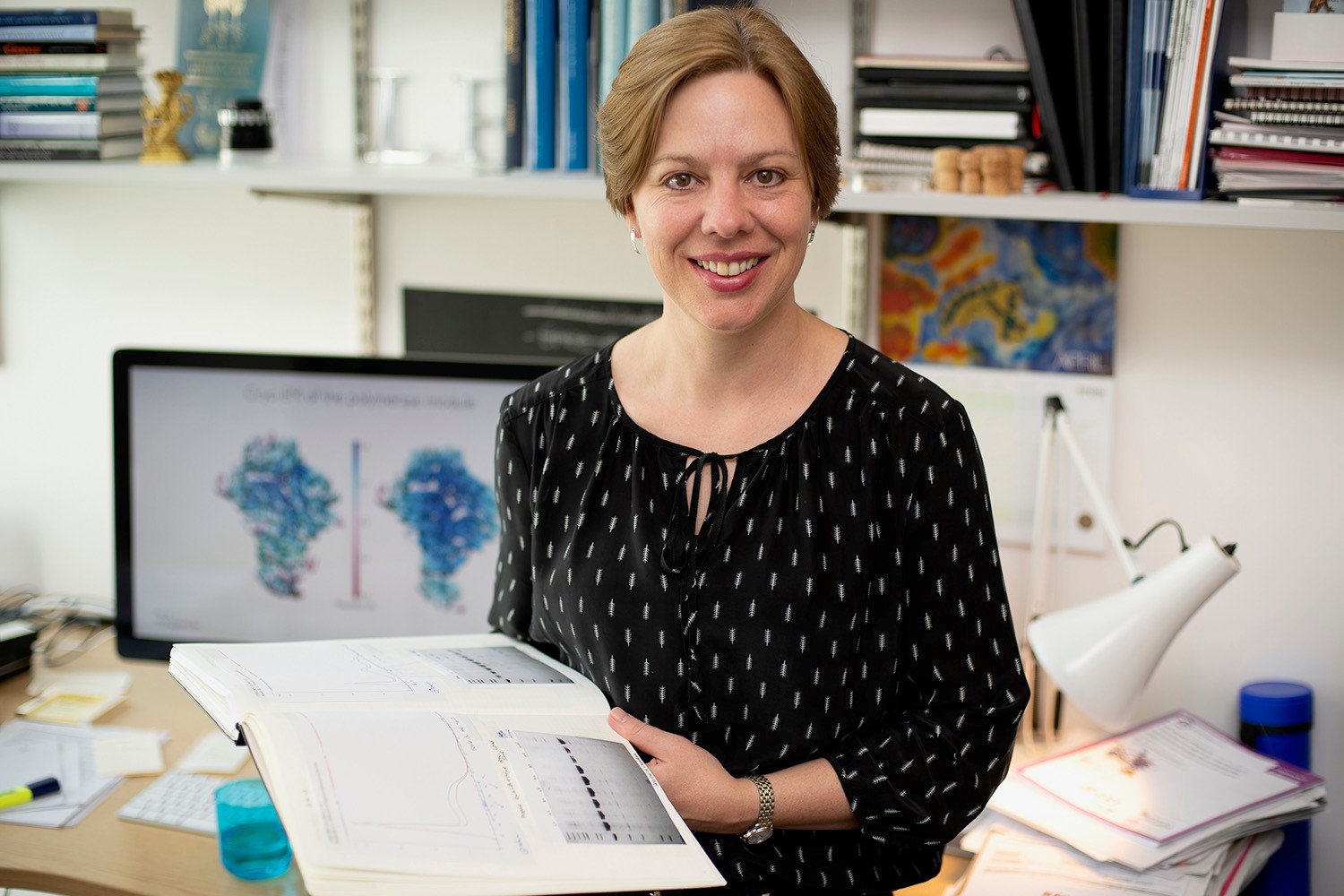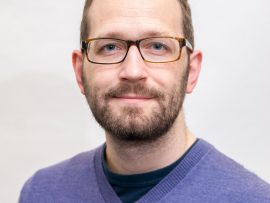Professor Lori A Passmore
Professor Lori Passmore is a Group Leader at the MRC Laboratory of Molecular Biology at Cambridge.
Using an integrated approach combining structural, biochemical and functional studies, Professor Passmore aims to reconstitute multi-protein complexes and their activities. She determines high-resolution structures of these complexes to understand their mechanisms.
Professor Passmore’s work focuses on understanding the mechanisms of protein complexes involved in regulating gene expression. This includes the cellular machinery that adds and removes poly(A) tails from mRNAs (CPF/CPSF, Ccr4-Not, Pan2-Pan3), and complexes involved in repair of DNA crosslinks (the Fanconi anaemia pathway). Lori’s lab also developed new supports for electron cryo-microscopy (cryoEM) that reduce radiation-induced specimen motion to improve resolution.
Having studied Biochemistry at the University of British Columbia in Vancouver Canada, Professor Passmore received her PhD from The Institute of Cancer Research in London, working with David Barford on the Anaphase Promoting Complex (APC/C). She performed postdoctoral work on eukaryotic translation initiation at the MRC LMB with Venki Ramakrishnan and Richard Henderson before starting her own lab in 2009.
Select publications
- Passmore LA, Coller J. (2022) Roles of mRNA poly(A) tails in regulation of eukaryotic gene expression. Nat Rev Mol Cell Biol 23, pages 93–106
- Alcón P, Shakeel S, Chen ZA, Rappsilber J, Patel KJ, Passmore LA. (2020) FANCD2–FANCI is a clamp stabilized on DNA by monoubiquitination of FANCD2 during DNA repair. Nature Struct Mol Biol 27, 240–248
- Shakeel S†, Rajendra E†, Alcón P, O’Reilly F, Chorev DS, Maslen S, Degliesposti G, Russo CJ, He S, Hill CH, Skehel JM, Scheres SHW, Patel KJ, Rappsilber J, Robinson CV, Passmore LA. (2019) Structure of the Fanconi anemia monoubiquitin ligase complex. Nature 575, 234-237
- Tang TTL, Stowell JAW, Hill CH, Passmore LA. (2019) The intrinsic structure of poly(A) RNA determines the specificity of Pan2 and Caf1 deadenylases. Nature Struct Mol Biol 26, 433-442
- Hill CH, Boreikaitė V, Kumar A, Casañal A, Kubík P, Degliesposti G, Maslen S, Mariani A, von Loeffelholz O, Girbig M, Skehel M, Passmore LA. (2019) Activation of the endonuclease that defines mRNA 3ʹ-ends requires incorporation into an 8-subunit core cleavage and polyadenylation factor complex. Mol Cell 73, 1217–1231
- Webster MW, Chen YH, Stowell JAW, Alhusaini N, Sweet T, Graveley BR, Coller J, Passmore LA. (2018) mRNA deadenylation is coupled to translation rates by the differential activities of Ccr4-Not nucleases. Mol Cell 70, 1089-1100.e8
- Casañal A, Kumar A, Hill CH, Easter AD, Emsley P, Degliesposti G, Gordiyenko Y, Santhanam B, Wolf J, Wiederhold K, Dornan GL, Skehel M, Robinson CV and Passmore LA. (2017) Architecture of eukaryotic mRNA 3′-end processing machinery. Science 348, 1056-1059
- Russo CJ, Passmore LA. (2014) Ultra stable gold substrates for electron cryomicroscopy. Science 346, 1377-1380
Select awards
- Winner of the Inaugural Elisa Izaurralde Award of the RNA Society, 2020
- Elected as a Member of the European Molecular Biology Organisation (EMBO), 2018
- Awarded European Research Council (ERC) Consolidator Grant (2017) and ERC Starting Grant (2011)
- Awarded a Suffrage Science Award, 2016

